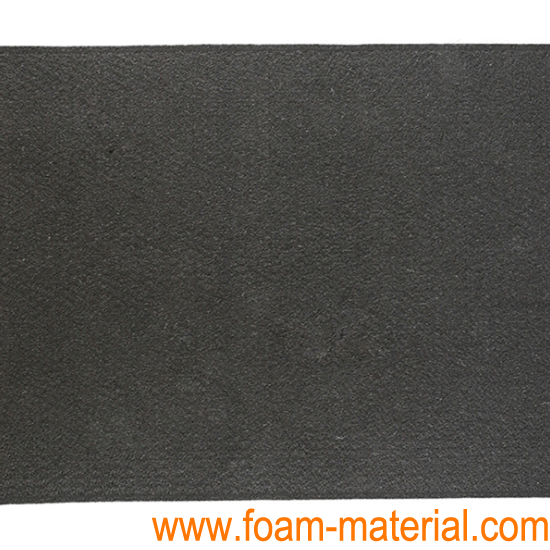Graphite Fiber Felt: A High-Performance Material for Energy Applications
Graphite fiber felt is a versatile, high-performance material commonly used in various industrial applications, particularly in the energy and chemical sectors. Made from carbon fibers that are woven and treated at high temperatures to convert the fibers into graphite, this felt exhibits excellent thermal, electrical, and chemical properties. Due to its lightweight and porous structure, graphite fiber felt is widely employed in fuel cells, batteries, high-temperature furnaces, and insulation applications.
● Key Properties of Graphite Fiber Felt
1. High Thermal Conductivity: Graphite fiber felt can withstand extremely high temperatures (up to 3000°C in inert atmospheres) while providing excellent thermal management properties, making it ideal for insulation in high-temperature environments.
2. Electrical Conductivity: Its porous structure allows for high electrical conductivity, making it useful as an electrode material in energy storage systems like batteries and fuel cells.
3. Corrosion Resistance: Graphite fiber felt has strong resistance to most chemicals, making it durable in harsh chemical environments like those found in electrochemical applications.
4. Lightweight and Flexible: Despite its durability and strength, the material remains lightweight and flexible, which makes it easy to work with and install in various systems.
5. Porous Structure: The highly porous nature of graphite felt allows for fluid or gas flow, which is especially useful in applications where diffusion or catalysis is required, such as in fuel cells.
● Manufacturing Process
Graphite fiber felt is typically produced through the following steps:
1. Carbonization: Carbon fibers are produced from precursor materials like polyacrylonitrile (PAN) or rayon, which are carbonized at temperatures of up to 2000°C.
2. Graphitization: To improve thermal and electrical properties, the carbon fibers are further processed in high-temperature furnaces (2500°C to 3000°C) in a controlled atmosphere, converting them into graphite.
3. Felting Process: The graphitized fibers are then woven or needled into a felt structure, resulting in a material that is both mechanically stable and porous.
● Applications of Graphite Fiber Felt
1. Fuel Cells
- In proton exchange membrane fuel cells (PEMFCs) and solid oxide fuel cells (SOFCs), graphite fiber felt is used as a gas diffusion layer or flow field material. Its porosity allows the efficient transport of gases (like hydrogen and oxygen), while its electrical conductivity facilitates current collection and transfer within the cell.
2. Batteries
- In flow batteries, such as vanadium redox flow batteries (VRFB), graphite fiber felt serves as the electrode material. Its large surface area and porous structure enhance electrochemical reactions, improving battery efficiency and longevity.
- Graphite fiber felt is also used in lithium-ion batteries as an electrode material to enhance conductivity and battery performance.
3. Thermal Insulation
- High-temperature furnaces and reactors use graphite fiber felt as a thermal insulation material due to its ability to maintain stability and provide thermal protection even at extreme temperatures.
- It is often used in vacuum furnaces and other thermal processing equipment, where it prevents heat loss and improves energy efficiency.
4. Chemical Processes
- Graphite fiber felt is employed in chemical reactors and electrolytic processes due to its corrosion resistance and chemical stability. It can function as an electrode in electrochemical cells where it is exposed to aggressive environments.
5. Semiconductor Manufacturing
- The felt is used in the semiconductor industry for insulation and shielding during high-temperature processes, helping to maintain clean and stable environments critical to semiconductor production.
● Advantages of Graphite Fiber Felt
- Enhanced Energy Efficiency: Its use in fuel cells and batteries improves the efficiency of energy conversion and storage systems due to its conductive and porous properties.
- Durability in Harsh Environments: Graphite fiber felt’s resistance to corrosion and high temperatures makes it ideal for use in demanding industrial applications.
- Flexibility and Customization: The felt can be easily cut, shaped, and customized to fit various design specifications, providing flexibility for integration into diverse systems.
● Conclusion
Graphite fiber felt is a crucial material in advanced energy storage, thermal insulation, and chemical processing applications. Its unique combination of lightweight properties, high thermal and electrical conductivity, and resistance to extreme conditions makes it an essential component in modern technologies such as fuel cells, batteries, and high-temperature furnaces. As industries continue to push for better energy efficiency and advanced material solutions, graphite fiber felt is likely to play an increasingly important role in various high-tech applications.
